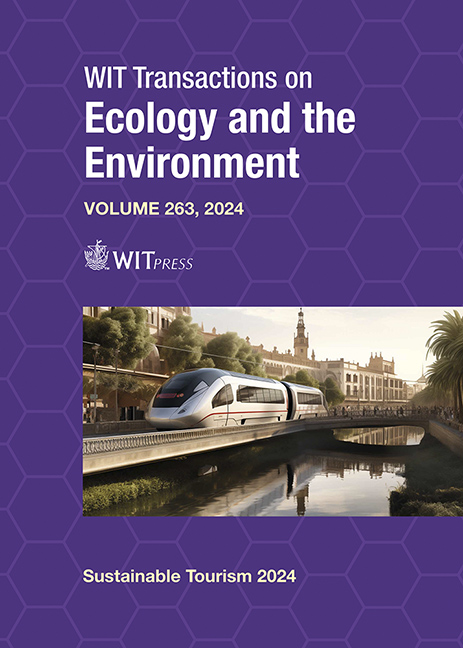TOURISM CARRYING CAPACITY OF GEOSITES ON SANTA CRUZ ISLAND, GALAPAGOS, FOR ITS SUSTAINABILITY
Price
Free (open access)
Transaction
Volume
263
Pages
12
Page Range
127 - 138
Published
2024
Paper DOI
10.2495/ST240111
Copyright
Author(s)
MARÍA JAYA-MONTALVO, JOSUÉ BRIONES-BITAR, LADY SOTO-NAVARRETE, RAMÓN ESPINEL, PAÚL CARRIÓN-MERO
Abstract
Galapagos was declared a Natural World Heritage Site (1976), UNESCO Biosphere Reserve (1984), and Ramsar Site (2001) because of its unique flora, fauna and landscapes, which inspired Charles Darwin. Due to the variety of tourist sites around the four large inhabited islands, there is an increase in national and foreign tourists (267,688 people in 2022), which may cause deterioration of the tourist facilities if not adequately monitored or regulated. This study aims to evaluate the tourism carrying capacity of 15 geosites on Santa Cruz Island, Galapagos, through qualitative and quantitative information for the sustainable enhancement and optimal use of geotourism. Field visits were made to collect data and information from each of the 15 geosites, and the tourism carrying capacity was calculated and evaluated using a methodology proposed by several authors for the development of sustainable geotourism strategies. In the evaluation of the carrying capacity, the visitor numbers varied between 500 and 2,000 per day, with Tortuga Bay and Playa ‘El Garrapatero’ standing out for their large size to accommodate tourists and adequate geotourism facilities. This analysis and evaluation allowed us to propose improvement strategies to promote and optimise the use of geosites based on geotourism, geo-education and geoconservation pillars. A fundamental axis is governmental participation through plans that motivate awareness-raising and sustainable tourism, as well as geocommunication of the unique values of each geosite, to argue technically for the sustainability of natural heritage.
Keywords
geotourism, geological sites of interest, sustainability, ecotourism, environmental protection, Galapagos





